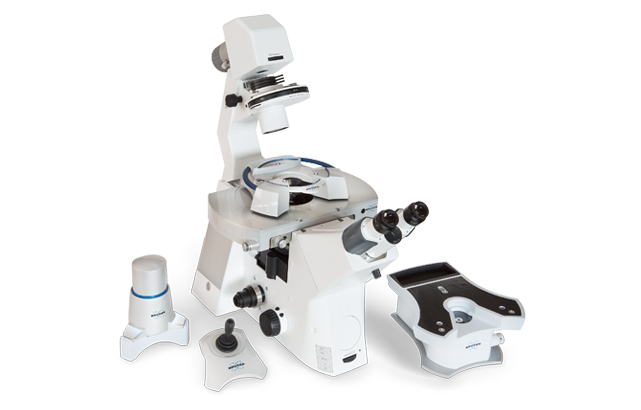BioScope Resolve


BioScope Resolve
Bruker’s BioScope Resolve BioAFM features the highest resolution atomic force microscopy imaging and most complete cell mechanics capabilities available for use with an inverted optical microscope. BioScope Resolve incorporates Bruker’s exclusive PeakForce Tapping technology to enable researchers to achieve the highest resolution biological imaging and piconewton-level force measurements and spectroscopy at every pixel. The system’s real-time synchronization of optical and atomic force microscopy data opens the door to previously inaccessible data, including physical structure, biochemical interactions, and mechanical properties, to provide unique insights into life sciences research.
Accurate, Repeatable, and Complete Cell Mechanics Data
Ultimate force control — PeakForce QNM®, has become the preferred mode for nanomechanical mapping. With new algorithms, it delivers highest resolution property maps at pN forces on live cells. Together with “No Touch” tip calibration, PeakForce QNM delivers the fastest quantitative mechanical characterization of live cells, providing a complete force curve for every pixel at actuation rates from 125 Hz to 2 kHz.
Widest range of ramp rates — At the core of quantitative nanomechanical maps are force-distance curves. Beyond characterizing elastic response, ramp rate dependent data provides insight into viscoelasticity or into molecular interaction times at the single molecule level. With our new FASTForce Volume covering rates from sub-Hz to 300 Hz, and PeakForce Tapping extending to 2 kHz, we provide the widest range of ramp rates for single points and imaging while maintaining pN force control.
Covering the whole spectrum — Our new RampScript™ allows the user to build, control and record complex nanomechanical measurements for use in protein pulling, ligand-receptor interaction, cell relaxation and viscoelastic probing. Its low force trigger capability, and latency-free implementation build on the system’s core performance to provide the most accurate script execution and force control. Ramping scripts are created in an intuitive drag and drop process and provide ultimate flexibility including per segment optical synchronization.
Cell Dynamics Without Compromise
Fast Tapping on living cells - Bioscope Resolve is the only BioAFM that enables fast scanning while simultaneously providing the large piezo scanner range necessary for capturing the dynamic behavior of living cells in real time (XYZ = 100µm x 100µm x 15µm). The Fast Tapping capabilities of Resolve are truly a step forward in conducting high-resolution AFM studies at timescales relevant to cellular processes. Together with the integration of advanced optical microscopy and environmental control, live cell studies have never been easier.
Seamlessly Combined Fluorescence and Biomechanics
Expanded measurement possibilities — The MIROView GUI ensures expert data generation via fully synchronized AFM images, force maps, and single-force curves with optical images and data.
Great optical integration — BioScope Resolve AFM works seamlessly with an optical microscope, thanks to communication protocols developed with researchers’ applications in mind. Pixel by pixel, line by line, and image by image, optical synchronization delivers flexibility never seen before on an AFM.
The perfect environment — With a new acoustic hood, work station, and a complete suite of life science research accessories, such as a sample heater, perfusion cell, and a top-down camera, the BioScope Resolve provides all your bioAFM research needs.
BioScope Resolve Data Gallery
Hear What Our Customers Have to Say
It was previously impossible to resolve the finest structures of a live cell like microvilli, but now with the improved PeakForce Tapping on BioScope Resolve, I can Image them easily on one hour.
Dr. Hermann Schillers, University of Münster, Germany
For the first time, bio-AFM analysis can directly correlate high-resolution molecular structures with function, on the same cell. BioScope Resolve provides the dynamic range and resolution necessary to allow a deeper understanding of structure-function relationships at the cell and tissue surface.
Dr. Lewis Francis, Swansea University, UK
With the unique capabilities of PeakForce QNM and the versatile operation modes on our BioScope AFM, we are ready to extend our micro- and nano-robotic manipulation research of biological samples with ultrahigh resolution.
Dr. Zhang Li, Chinese University of Hong Kong
